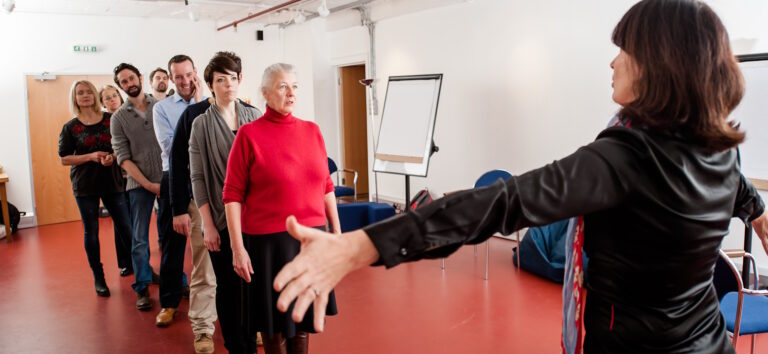
Effective Learning: Techniques That Change Minds
Do you find learning or teaching an uphill struggle? Take heart from the fact that the human mind is designed to learn, but only if we play to its strengths
The Effective Learning Challenge
Generally speaking, people don’t tend to enjoy the prospect of learning, but usually, because their experiences haven’t been great. This is particularly tragic when you consider that humans are extremely receptive to effective learning experiences. After all, our minds are specifically designed to learn.
Unfortunately, mass education and online courses often fail to employ effective learning techniques. Perhaps you recall sitting through hours of lessons and lectures, with teachers and lecturers talking at you rather than with you. Maybe you had to wade through heavy textbooks or, more recently, take an e-learning course that felt like a glorified eBook.
Effective Learning Techniques
Thanks to psychology and neuroscience, we now know a great deal more about how humans prefer to learn, so let’s examine a few fundamental characteristics of the mind before we pinpoint the most effective learning techniques.
Changing Your Mind
Learning literally changes your mind. As information is absorbed, our brain cells are altered and new neural pathways are created between them. This helps us to understand information, record it with clarity, and recall it when we need it most.
The brain’s ability to change in this way is called neuroplasticity, and the good news is that it occurs throughout life. Naturally, the brain changes most significantly during our early years as we experience things for the first time. Nevertheless, we can easily train our mind to be responsive as we grow older by continually giving it new information and experiences.
Getting Emotional
Emotion plays a critical role in effective learning. Humans are sensitive to change and emotions tell us if we believe that change is positive or negative. This guides our actions to either move towards what might bring value, or move away from what could cause harm.
To arrive at these conclusions, the mind prefers to observe cause and effect directly. Our desire to ‘see it with our own eyes’ is the same for simple things such as learning why food must cool slightly before we eat it, or more complex situations such as testing out new business strategies.
Trial and error is when we initiate this cause and effect for ourselves. However, the mind has another extremely useful feature that means we don’t have to risk burning our mouths and damaging our business every time we want to try something new.
Our ability to experience emotion vicariously means we can learn from other people’s actions. Associated with empathy, this is why we can feel joy when someone achieves their goal, or become distressed if they are hurt.
Vicarious emotion also explains why storytelling is such an important part of human society. Traditional storytellers wove myths and fairy tales about characters who embarked on adventures and learnt specific personality traits and skills along the way. At first, the protagonist uses the wrong method and fails, but eventually, they learn the right method and succeed.
Memories are Made of This
Emotion also plays a key role in how our mind records memories. If an event evokes intense positive or negative feelings, the mind considers it to be more important. Therefore, it records the memory in a way that makes it more accessible. This is why we tend to remember extremely enjoyable and unpleasant experiences in greater detail than day-to-day events.
Teachers and trainers must also appreciate that the human mind has long and short-term memory storage, and something slightly different called working memory. This is where we store and manipulate information about the current task we are performing.
Working memory has limited capacity and can only take in a specific cognitive load, which is why we sometimes lose the thread of complex concepts. We need the speaker to pause every now and again so we can process what they are saying in chunks.
Could You Repeat That
Before we look at effective learning techniques, we also need to understand how humans decide what to believe.
In addition to being sensitive to change, humans are extremely sensitive to patterns. If we observe cause and effect once, we record it as a possibility. If we see the same cause and effect again, we record it more definitively. Until we see that second or third instance, the jury is still out. This is why we sometimes have trouble believing things we haven’t observed for ourselves.
Observing repetition enables us to build solid rules so we can interact with the world safely and successfully. We learn how to cross roads, play games, get on with other people, and craft business processes that work.
That said, it’s worth mentioning that this is a complex topic. What we choose to believe is affected by many factors, such as our cognitive biases. These are strategies that the mind uses to assess information, and it’s well worth reading about them as they can easily cause us to jump to the wrong conclusion.
Effective Learning
Take a moment to process all of the above in your working memory, and let’s move on to look at effective learning techniques for professional skills.
Putting all of these points together, you can probably see why the most effective learning techniques engage people directly so they can observe cause and effect. Furthermore, learning experiences should be:
- Emotive enough to be memorable
- Undertaken in short bursts to take account of cognitive load
- Reinforced so we are clear about the value of messages.
Let’s look at some effective learning techniques that capitalise on the way the human mind learns. Some of these points will also enhance the delivery of your presentations as well. And if you want to see these techniques in action, simply join an Impact Factory course or one of our taster sessions.
Get Involved
To make maximum use of emotion, employ strategies that actively involve people in the learning experience. For example, devise exercises that bring messages to life, and conduct role-play to put people in the moment.
Group activities and breaking out into pairs or trios also increases engagement. Furthermore, switching people around creates new combinations of personalities and backgrounds that deliver rich experiences and insights.
Create Discovery
A cryptic group exercise or role-play gives you the opportunity to boost the emotion of the learning experience. As you finally reveal the purpose of the exercise, the added surprise and joy of discovery make the messages more memorable.
The greatest learning surprises are often small behaviour changes that have huge impacts on our life. Try to aim for a ‘why has no one told me this before’ moment.
Change Perspective
Find a way to frame the subject in a slightly unusual context that makes it more fascinating, memorable, and relevant to someone’s professional and personal life. This is a key point to bear in mind as there are very few skills we only use at work or only use at home. We are our skills and apply them in different ways wherever we are.
Build Context
It is hard to be emotionally involved with something that doesn’t seem relevant to our life. This can be a particular challenge when teaching general interpersonal skills such as communication and assertiveness.
Therefore, look for ways to make the lessons directly relevant to the group. For example, ask people to share their experiences, and then focus on one or two of those experiences to demonstrate how to apply skills practically. Getting people to share is also a great learning experience in itself as others may relate to the real-world stories they tell.
Play to Strengths
Every course has core messages to convey, but the best trainers deliver them in the context of people’s strengths. That means identifying what each course delegate already does well and then using it as a basis for learning.
This essential approach serves multiple purposes. It increases confidence because it makes the job of learning seem much easier. It also motivates people to embrace the messages for immediate benefit. Playing to strengths is of course one of the key principles that coaches and mentors use.
Keep it Simple and Clear
Be sensitive to the cognitive load of people’s working memory. The best courses are structured into a logical series of stages that deliver short bursts of messages.
To help people, summarise the key messages at the end of each stage to reinforce what was learned, before moving on to the next. Over the course of the session, the messages build on each other to create an effective learning experience that people remember.
Reinforce Positively
Traditional learning tends to focus on the negative. Teachers and trainers point out what we do incorrectly, and how we can improve. While this may seem logical, negativity risks disheartening people at a time when you want them to feel motivated.
Positive reinforcement is a simple shift in perspective to create a safe, experiential environment. Here, the teacher or trainer focuses on the level of proficiency the person has achieved so far, and teaches them how to take the next step.
To illustrate the different approaches, think of the journey of improvement as a vertical line that we progressively move upwards as we get better. Negative reinforcement focuses on the part of the line that we have so far failed to reach. In contrast, positive reinforcement praises us for our progress so far, and gives us the insight to continue upwards.
Effective Learning
Impact Factory runs
Open Train the Trainer Courses
Five-Day Intensive Communicate With Impact Workshops
and personalised





